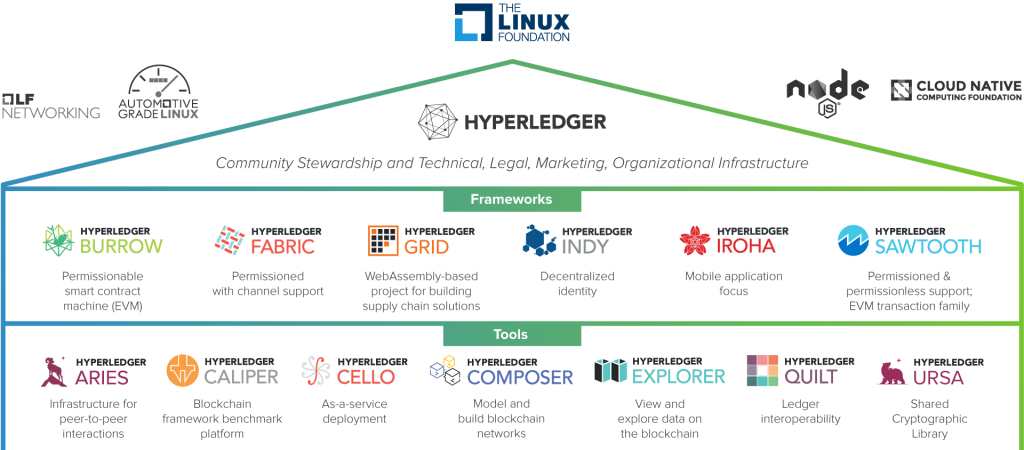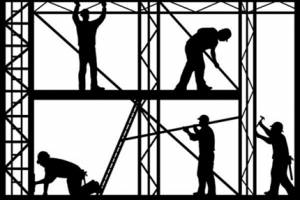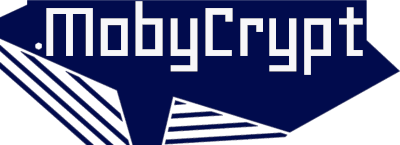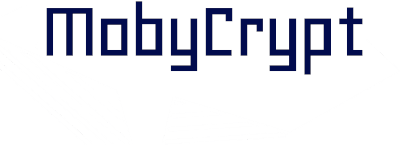Entering the Blockchain world you can be sure, that sooner or later you will hear about the Hyperledger. Basically what blockchain does – allows to save data in the immutable data storage and running immutable software in decentralized manner opened new possibilities for many business branches. Even if the blockchain technology is most often related to Bitcoin or Ethereum as the grandfathers of that technology, Hyperledger is very important player which grows stronger very fast. Let’s take the closer look to the Hyperledger blockchain technology army and see what’s behind.
Hyperledger Greenhouse
Precisely speaking there is nothing like Hyperledger in general as single project, technology, blockchain – whatever. Hyperledger term can be described as the group of open-source projects which belong to the Linux Foundation Projects. These projects are blockchain frameworks & complementary tools dedicated to these frameworks. I’ve started quite aggressively talking about the army (we will come back to it later), however In the Hyperledger website we can find the term Greenhouse to describe this group of projects. The picture below presents what’s inside the greenhouse.

As visible on the picture, currently in the greenhouse we can find 6 blockchain frameworks and 7 tools. All of the them belong to the Linux Foundation, which takes care about the open-source, global projects like for example Linux which is probably one of the greatest project of this kind in the history. The key point to remember:
Hyperledger , Hyperledger Greenhouse – set of blockchain frameworks and related tools under Linux Foundation.
Hyperledger blockchain frameworks
Currently there are 6 separated blockchain frameworks which belong to the Hyperledger family: Burrow, Fabric, Grid, Indy, Iroha and Sawtooth. The term framework in software engineering field is used to describe the software dedicated to build something (in our case to build blockchains). What’s important is that framework provides everything necessary to achieve the goal, to create. It gives the frames which are used to build. The blockchain framework gives the tools (frames) to build the fully functional blockchain network. If you would split the components of the blockchain network, trying to design it from scratch and then build – writing the software (blockchains are software) – you will be able to built it using blockchain framework, which contains all the components you need and will tell you how to use them in order to achieve the goal. The goal of framework is to make work faster and easier – you use something what was previously designed and created in order to simplify the work you have to do.

Why 6 projects? There are of course some differences and similarities between the Hyperledger projects which generally aims to be specialized blockchain frameworks dedicated to specific business problems. However all of the projects follow few similarities:
- permissioned – Hyperledger blockchain frameworks are focused to design and implemented permissioned blockchain networks. Permissioned means that basically these networks are not publicly accessible. It doesn’t mean that making it public cannot be achieved (in some projects) – it rather means that it’s not the goal. Permissioned blockchains must provide the whole blockchain mechanisms like immutability, data consistency, security – similiarly to public blockchains like Bitcoin or Ethereum. However in contrast to public blockchains – in permissioned blockchains the strict rules of network schema are defined. You cannot become the part of the permissioned blockchain if you are not allowed to. Such network is designed to be available only for selected entities. These entities have the power of sending transactions, reading data, changing configuration and generally interacting with network. The rules of access and the rights in the network are designed and defined (cryptographically secure).
- open source – all the projects are completely transparent, the code is public and accessible in the Github: https://github.com/hyperledger. What it means that they are open-source? In IT world, any open-source software has the source code (so basically the code of software) publicly available. It means anyone can download, use it, check how it works. The goal of making code available is to gain trust – in such way everyone knows what the software is doing and how it works.
- extremely configurable – the ultimate goal of Hyperledger frameworks is to provide tools for building blockchain networks. It makes these frameworks to be flexible, highly configurable, often modular in order to allow to design and build blockchains which fits particular needs. All of the features provided by the Hyperledger are very, very essential for many real business use cases where the concrete design, performance or architectural approach must be applied.
The blockchain tools
Hyperledger projects are not only blockchain frameworks but also tools which are complementary for the frameworks. These tools are not dedicated to built blockchains, they are not frameworks. The purpose for the tools is to help blockchain creators to design, develop, support blockchains based on (built using) Hyperledger frameworks. These tools are for example blockchain explorer (Hyperledger Explorer) which gives the insight to the developed blockchain network via graphs and analytics. Other project is Hyperledger Composer which is dedicated to the blockchain data structures & application modeling. These projects are extremely helpful (or even essential) for anyone who builds blockchains using Hyperledger frameworks.
Why should I care?
Blockchain changes the software-mindset and the way the software will be designed and implemented. Trustless, immutable, public software, cryptograhically secure, available for everyone. That’s a great vision and this is the mission of public blockchains. However not every system is going to be public even if will likely to use blockchain mechanics. In other words blockchain technology is going to be used however not always PUBLIC blockchain will be suitable.
This is why we talk about Hyperledger, the permissioned blockchain. I’ve described Hyperledger as the army – the army of projects focused to do really complex job. Hyperledger projects supported by huge IT players like IBM or Intel are among the leaders of blockchain adoption in corporate world. Because of that interest, Hyperledger is one of most important Blockchain frameworks now to look on. Driven by the market needs, dedicated to concrete use cases – real business use cases covered by money. Does that use case support great mission behind the blockchain? The answer is not clear. Tool is just a tool, it doesn’t determine by whom will it be used. What’s important is that in context of blockchain world – the better tools are developed what probably will have influence on the spread of blockchain technology.

